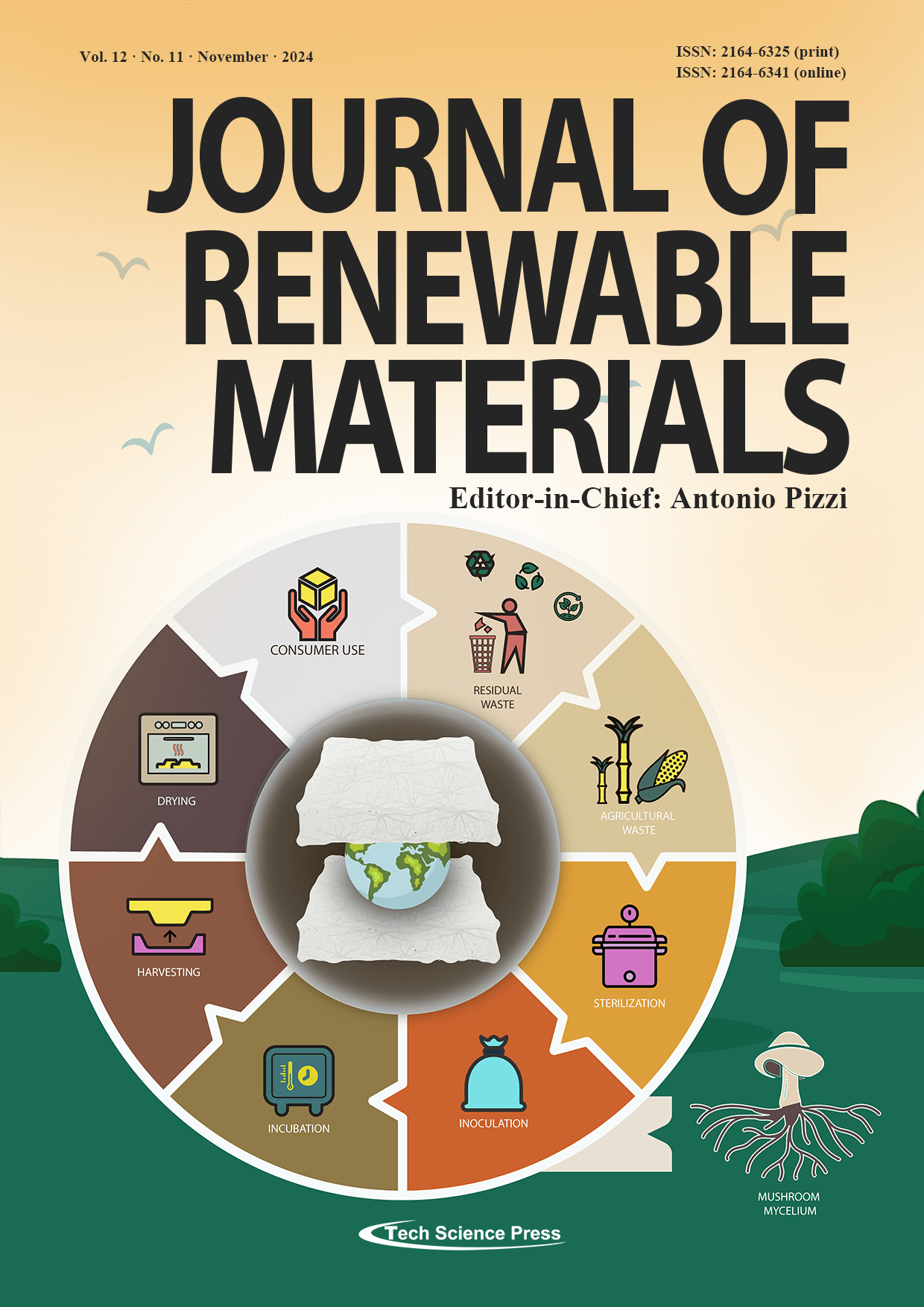Termite Resistance of Heat-Treated Eucalyptus OSB Bonded with Eco-Friendly Castor Oil Adhesive
Estefani S. Sugahara1,2,3,*, André M. A. Dias1,3, Fernanda D. Maffioletti5, Juarez B. Paes5, André L. Christoforo4, Edson C. Botelho2, Alfredo M. P. G. Dias1,3, Cristiane I. Campos2
Journal of Renewable Materials, Vol.12, No.11, pp. 1911-1925, 2024, DOI:10.32604/jrm.2024.056198
- 22 November 2024
(This article belongs to the Special Issue: Advances in Eco-friendly Wood-Based Composites: Design, Manufacturing, Properties and Applications – Ⅱ)
Abstract Over the last decade, the oriented strand board (OSB) market presented meaningful growth. However, as a wood-based product, because of its anatomical structure and chemical composition, OSB can be damaged by biodeterioration agents. Given that, the biodeterioration of OSB panels must be investigated to improve its durability. In this way, this work analyses the biological resistance against termites (Cryptotermes brevis and Nasutitermes corniger) of heat-treated OSB panels made with Eucalyptus wood glued with vegetable-based polyurethane-an eco-friendly and sustainable adhesive derived from castor oil. Various panels were produced with different layers compositions (face:core:face of 25:50:25 and 30:40:30) in wood… More >
Graphic Abstract
